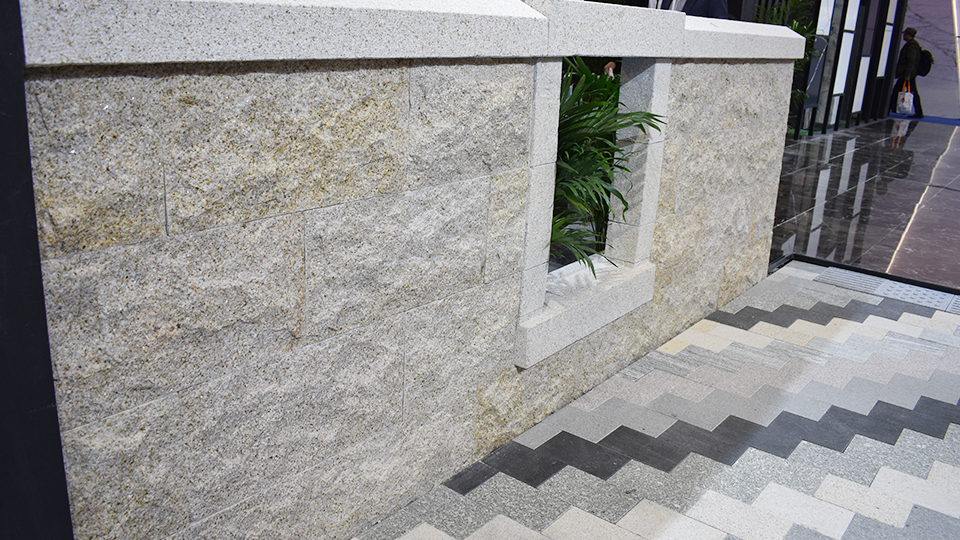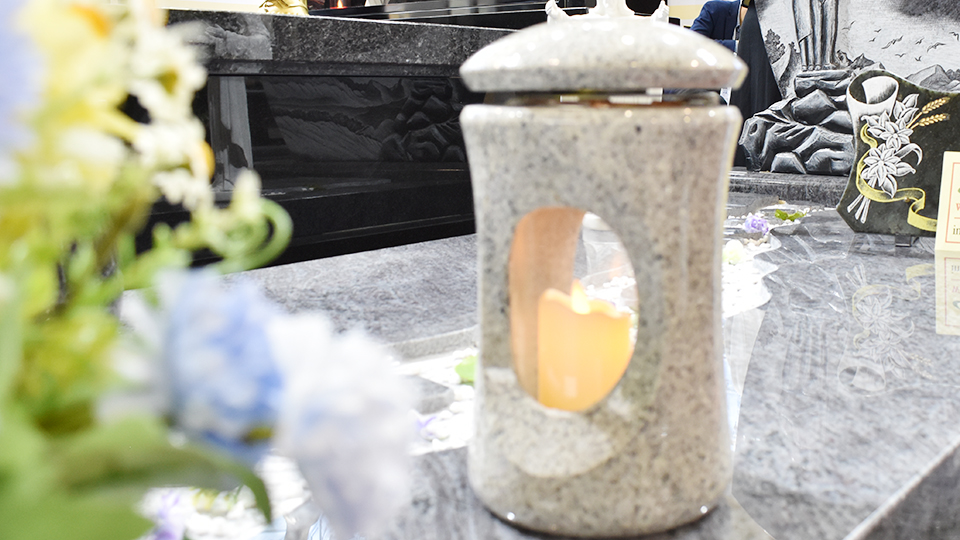

The Standard Thicknesses: 2 cm vs. 3 cm
Granite slabs are quarried from the earth and then processed and polished to a uniform thickness. The two most common thicknesses are a direct result of the industry's evolution and the balance between material properties, cost, and structural requirements.
1. The 3 cm (1 ¼ inch) Slab
The 3 cm (1.25 inches) thickness has become the de facto standard for kitchen countertops in North America. This is due to a variety of technical and practical advantages that make it the preferred choice for most installations.
Technical Advantages:
Self-Supporting Strength: A 3 cm granite slab is inherently strong enough to support its own weight over standard spans without the need for additional reinforcement. This is a critical factor for kitchen countertops, which often have overhangs for bar seating or spans between cabinets. An overhang of up to 10 inches is generally considered safe for a 3 cm slab without the need for corbels or steel brackets. This is a significant advantage in modern kitchen design where clean lines and minimal supports are desired.
Enhanced Durability: The extra thickness provides a more robust and durable surface. It is less prone to chipping along the edges, cracking under stress, or fracturing from the impact of heavy objects like cookware. The increased mass of the slab also adds to its resistance to vibration and flexing.
Simple Installation: The 3 cm slab is heavy and dense, which can be a logistical challenge during transport, but it simplifies the on-site installation. It does not require a plywood sub-top (also known as a sub-deck or underlayment) for support. The granite can be installed directly onto the cabinet bases, creating a cleaner and more professional look. This also eliminates the hidden cost of the sub-top material and the labor required to install it.
Aesthetic Appeal: Many homeowners and designers prefer the more substantial, luxurious look that a thicker slab provides. It creates a bold and elegant statement, particularly on large kitchen islands where the countertop is a focal point. The thickness also allows for a wider range of edge profiles, from a simple eased edge to a complex ogee or full bullnose, providing more design flexibility.

Cost and Weight Considerations:
Higher Material Cost: A 3 cm slab contains approximately 33% more material than a 2 cm slab, which directly translates to a higher raw material cost. This difference can be significant, especially for large projects.
Greater Weight: The weight of a 3 cm granite slab is substantial, approximately 19 lbs per square foot. This necessitates careful planning, the use of specialized lifting equipment, and more installers to move and set the stone in place. It also means the underlying cabinetry must be robust enough to support the weight.
2. The 2 cm (¾ inch) Slab
The 2 cm (0.75 inches) thickness was historically the more common option, and it remains popular in some regions, particularly in parts of Asia and Europe, and for certain applications like bathroom vanities.
Technical Advantages:
Lighter Weight: A 2 cm slab weighs approximately 13 lbs per square foot, making it significantly lighter than its 3 cm counterpart. This makes it easier to transport and install, potentially reducing labor costs. Its lighter weight is a key benefit for projects where the underlying cabinetry or structure may not be able to handle the weight of a thicker slab.
Lower Material Cost: Due to the lower material volume, 2 cm granite slabs are typically 10-20% less expensive than 3 cm slabs of the same stone. This can make them an attractive option for homeowners working with a tighter budget.
Sleek, Modern Aesthetic: In contemporary and minimalist designs, a thinner countertop can provide a sleek, understated look that complements the overall aesthetic.
Technical Disadvantages:
Structural Vulnerability: The most significant drawback of a 2 cm slab is its lack of inherent structural rigidity. It cannot support its own weight over large spans or overhangs without proper reinforcement.
Required Reinforcement: For kitchen countertop applications, a 2 cm slab almost always requires a plywood sub-top for structural support. This sub-top provides a continuous, rigid surface for the granite to rest on, preventing it from cracking. While the raw material cost is lower, the added cost of the plywood and the labor for its installation often offsets the initial savings.
Edge Lamination: To create the illusion of a thicker, more substantial countertop, a 2 cm slab typically requires edge lamination. This process involves gluing an extra strip of granite to the underside of the edge, creating a layered effect that doubles the visible thickness. This process adds labor, cost, and a potential point of failure. A visible seam from the lamination can sometimes be a cosmetic issue.
Limited Overhangs: A 2 cm slab can only support an unsupported overhang of approximately 6 inches. Any overhang greater than that will require the use of corbels or other brackets to prevent stress cracks and ensure safety.
Factors Influencing Your Choice
Deciding between a 2 cm and a 3 cm granite slab is not just about price. Several other factors should be considered to ensure the final product meets the project's functional and aesthetic needs.

1. Project Type and Application
Kitchen Countertops: For the vast majority of kitchen countertop applications in North America, the 3 cm slab is the gold standard. Its superior durability, ability to handle overhangs, and resistance to damage from daily use make it the most practical and long-lasting choice.
Bathroom Vanities: In bathrooms, where the surface is not subjected to the same level of heavy use as a kitchen, a 2 cm slab can be a perfectly viable and cost-effective option. Its lighter weight is also a benefit for vanities with lighter-duty cabinetry.
Backsplashes and Wall Cladding: For vertical applications like backsplashes, thinner slabs of 1.5 cm or even 1 cm are sometimes used. Since they are not load-bearing surfaces, the lighter weight is a distinct advantage for ease of installation.
2. Design and Aesthetic
Traditional vs. Modern: The aesthetic of a thicker slab is often associated with a classic, traditional, or luxurious look. The bold profile creates a strong visual presence. Conversely, a thinner, 2 cm slab with a simple edge is a hallmark of modern, minimalist design, where sleekness and clean lines are prioritized.
Edge Profiles: The thickness of the slab determines the complexity of the edge profiles that can be created. A 3 cm slab provides the necessary depth for intricate cuts like an ogee or a complex waterfall edge. A 2 cm slab is typically limited to simpler edge profiles, or it requires the lamination process to achieve a thicker look.
3. Budget and Cost
While the raw material cost of 2 cm granite is lower, it's crucial to consider the full picture. The added costs of a plywood sub-top, edge lamination, and potential reinforcing brackets for overhangs can quickly narrow the price gap. In many cases, the final installed price for a 2 cm laminated granite countertop is comparable to, or even more expensive than, a standard 3 cm countertop. A professional estimate from a reputable fabricator is essential to get an accurate total cost for your specific project.
4. Structural Requirements
For certain projects, such as a large kitchen island with an extensive overhang for seating, the structural integrity of a 3 cm slab is a non-negotiable requirement for safety and longevity. Attempting to use a thinner, 2 cm slab for such a design would require a complex and often unsightly support system, undermining the project's aesthetic goals.
Conclusion
In the world of granite kitchen countertops, the thickness is not just a matter of millimeters; it is a fundamental technical specification that dictates performance, durability, and design possibilities. While both 2 cm and 3 cm granite have their place in the market, the 3 cm (1 ¼ inch) thickness has firmly established itself as the industry standard for kitchen countertops due to its inherent strength, elegance, and simplified installation process.
For homeowners and designers, the decision should be a thoughtful one, balancing aesthetic preference with the technical requirements of the project. While a 2 cm slab can offer a sleek, modern look and a lower initial price, a 3 cm slab often represents a more robust, long-term investment that provides superior functionality and a timeless, luxurious appeal.
Name: selena
Mobile:8613176910558
Tel:86-13176910558
Whatsapp:8619323167067
Email:409284553@qq.com
Add:Laizhou ,Shandong , Shandong Province, China